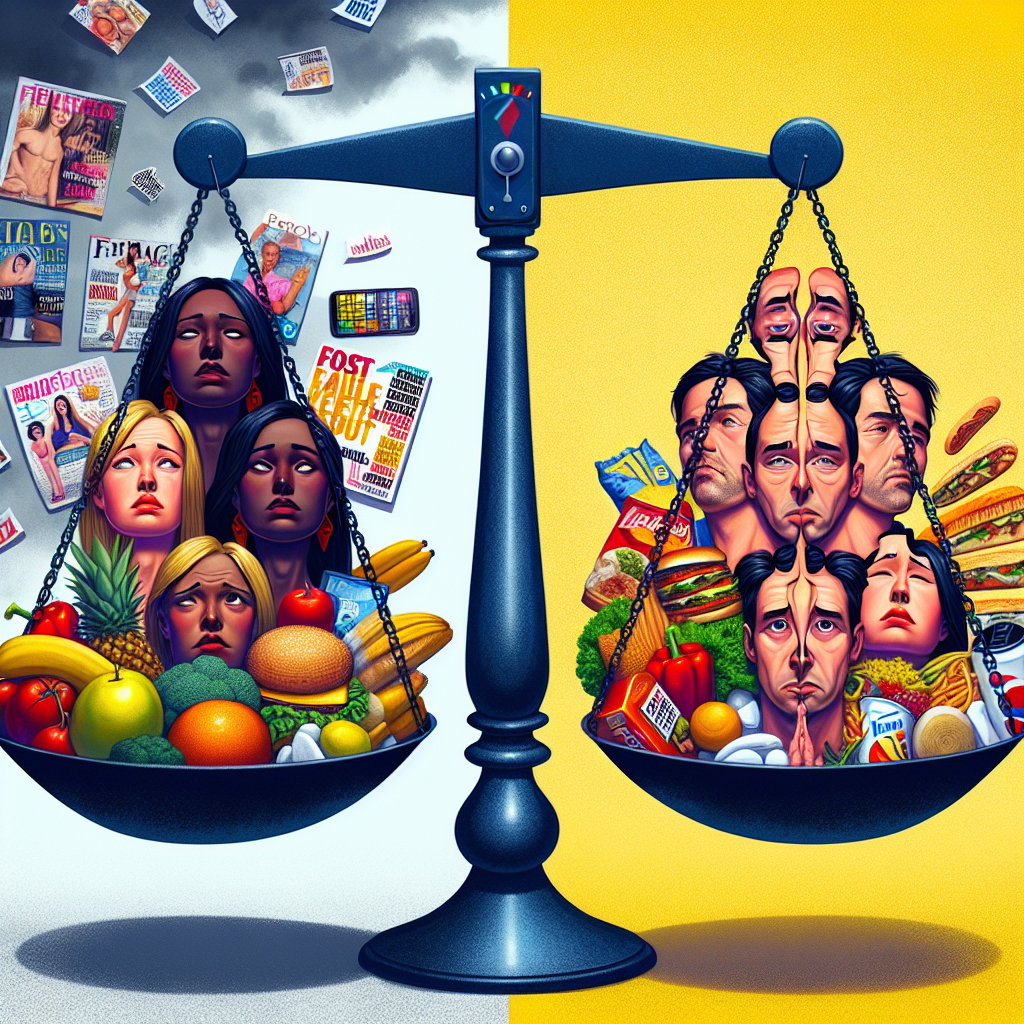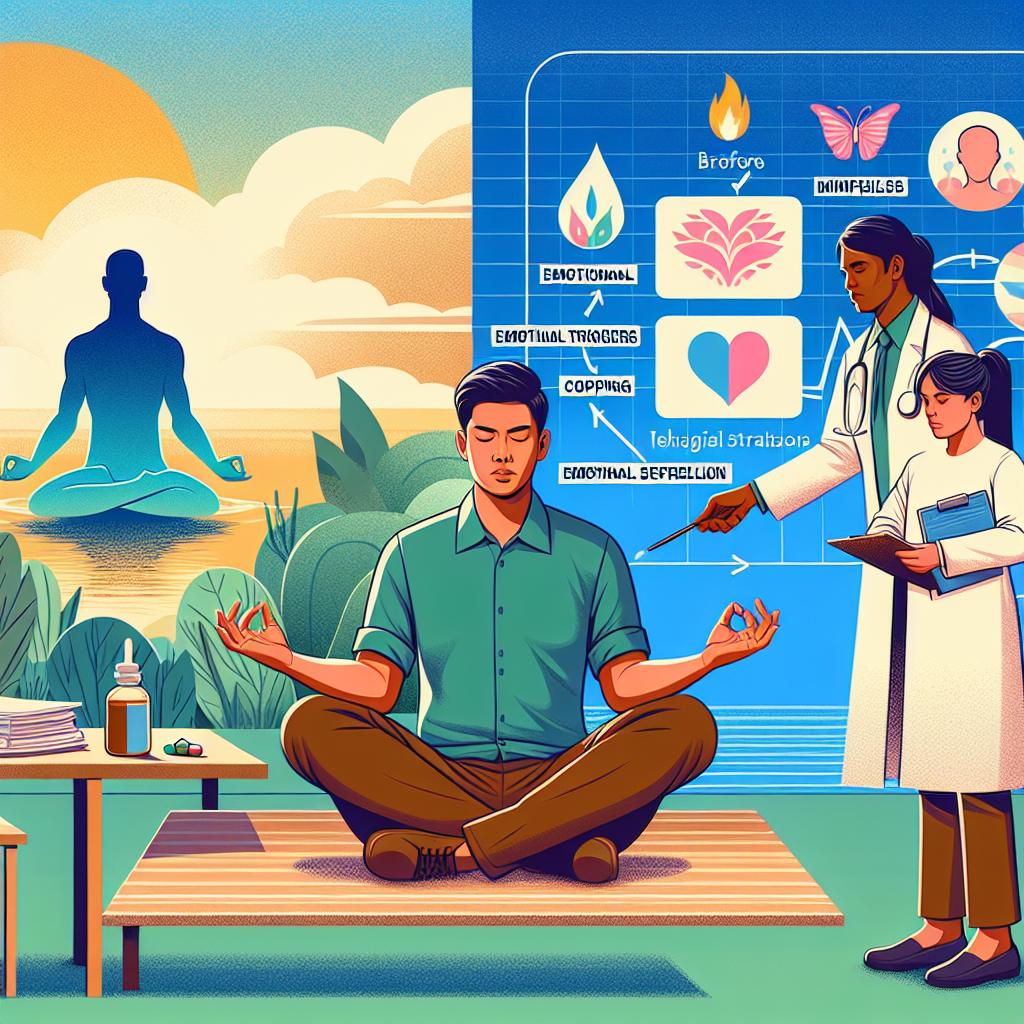-
Table of Contents

“Unveiling the Mirror: The Hidden Link Between Eating Disorders and Body Image Struggles”
Introduction
The connection between eating disorders and body image issues is a complex and multifaceted relationship that has garnered significant attention in psychological and medical research. Eating disorders, such as anorexia nervosa, bulimia nervosa, and binge-eating disorder, are serious mental health conditions characterized by abnormal eating habits and a preoccupation with body weight and shape. Body image issues, on the other hand, refer to the perceptions, thoughts, and feelings an individual has about their physical appearance. These issues often stem from societal pressures, cultural norms, and personal experiences, leading to dissatisfaction and distress regarding one’s body. The interplay between these two phenomena is critical, as negative body image is frequently identified as a significant risk factor for the development and maintenance of eating disorders. Understanding this connection is essential for developing effective prevention and treatment strategies, as it highlights the need for a holistic approach that addresses both the psychological and sociocultural dimensions of these conditions.
The Impact of Media on Body Image and Eating Disorders
In today’s digital age, the media’s influence on body image and eating disorders is both profound and pervasive. From glossy magazine covers to the endless scroll of social media feeds, the portrayal of idealized body types has become a ubiquitous part of our daily lives. This constant exposure to unrealistic beauty standards can have a detrimental impact on individuals’ perceptions of their own bodies, often leading to the development of eating disorders. Understanding this connection is crucial in fostering a healthier relationship with our bodies and promoting mental well-being.
The media often perpetuates a narrow definition of beauty, typically characterized by thinness for women and muscularity for men. These images are frequently airbrushed and digitally altered, creating an unattainable standard that few can naturally achieve. As a result, individuals may internalize these ideals, believing that their worth is tied to their ability to conform to these unrealistic standards. This can lead to body dissatisfaction, a significant risk factor for the development of eating disorders such as anorexia nervosa, bulimia nervosa, and binge-eating disorder.
Moreover, the rise of social media has intensified this issue. Platforms like Instagram, TikTok, and Facebook allow users to curate their lives, often presenting an edited version of reality that emphasizes physical appearance. The constant comparison to these idealized images can exacerbate feelings of inadequacy and self-criticism. Studies have shown that increased social media use is associated with higher levels of body dissatisfaction and disordered eating behaviors. The pressure to gain likes and followers can drive individuals to engage in unhealthy practices, such as extreme dieting or excessive exercise, in an attempt to achieve the ‘perfect’ body.
However, it is important to recognize that the media is not solely to blame. Societal and cultural factors also play a significant role in shaping body image and eating behaviors. For instance, certain cultures may place a higher value on thinness or muscularity, further reinforcing the pressure to conform to these ideals. Additionally, personal factors such as genetics, personality traits, and life experiences can influence an individual’s susceptibility to developing an eating disorder.
Despite these challenges, there is hope. Increasing awareness about the impact of media on body image and eating disorders is a crucial step in addressing this issue. Media literacy programs can help individuals critically evaluate the images they see and understand the artificial nature of many media portrayals. By promoting a more realistic and diverse representation of bodies in the media, we can begin to challenge the narrow beauty standards that contribute to body dissatisfaction.
Furthermore, fostering a supportive environment that encourages self-acceptance and body positivity can make a significant difference. Initiatives such as the body positivity movement aim to celebrate all body types and promote the idea that beauty is not limited to a specific size or shape. By shifting the focus from appearance to overall well-being, we can help individuals develop a healthier relationship with their bodies.
In conclusion, the media’s impact on body image and eating disorders is a complex issue that requires a multifaceted approach. By raising awareness, promoting media literacy, and fostering a culture of self-acceptance, we can work towards mitigating the negative effects of media on body image. Ultimately, it is about empowering individuals to embrace their unique selves and recognize that their worth is not determined by their appearance. Through collective effort and a commitment to change, we can create a more inclusive and supportive society where everyone feels valued and accepted.
How Social Media Influences Body Image and Eating Disorders
In today’s digital age, social media has become an integral part of our daily lives, shaping the way we perceive ourselves and the world around us. While it offers numerous benefits, such as connecting with friends and discovering new interests, it also has a darker side that can significantly impact mental health. One of the most concerning issues is the influence of social media on body image and the subsequent development of eating disorders. Understanding this connection is crucial for fostering a healthier relationship with both our bodies and the digital world.
Social media platforms are inundated with images and videos that often portray an unrealistic standard of beauty. Filters, photo editing apps, and carefully curated content create an illusion of perfection that is nearly impossible to achieve in real life. As users scroll through their feeds, they are bombarded with these idealized images, leading to constant comparisons. This can result in feelings of inadequacy and dissatisfaction with one’s own body, which are key risk factors for developing body image issues.
Moreover, the algorithms used by social media platforms tend to prioritize content that garners high engagement, often favoring posts that conform to societal beauty standards. This creates a feedback loop where users are continuously exposed to the same narrow definitions of attractiveness. Over time, this can distort their perception of what is normal and healthy, making them more susceptible to body image concerns.
The impact of social media on body image is particularly pronounced among adolescents and young adults, who are in a critical stage of developing their self-identity. During this period, they are more vulnerable to external influences and may internalize the unrealistic standards they see online. This can lead to a preoccupation with appearance, weight, and shape, which are common precursors to eating disorders such as anorexia nervosa, bulimia nervosa, and binge-eating disorder.
However, it is important to recognize that social media is not inherently harmful. It can also be a powerful tool for promoting body positivity and mental health awareness. Many influencers and organizations are using their platforms to challenge traditional beauty standards and encourage self-acceptance. By sharing unedited photos, personal stories, and supportive messages, they are helping to create a more inclusive and realistic representation of beauty.
To mitigate the negative effects of social media on body image and eating disorders, it is essential to cultivate a critical mindset when engaging with online content. This involves questioning the authenticity of what we see and reminding ourselves that social media often presents a highlight reel rather than an accurate depiction of reality. Additionally, curating our feeds to include diverse and body-positive accounts can help counteract the pervasive influence of unrealistic beauty standards.
Parents, educators, and mental health professionals also play a vital role in addressing this issue. By fostering open conversations about body image and the impact of social media, they can help young people develop a healthier relationship with their bodies and the digital world. Providing resources and support for those struggling with eating disorders is equally important, as early intervention can significantly improve outcomes.
In conclusion, while social media has the potential to negatively influence body image and contribute to the development of eating disorders, it also offers opportunities for positive change. By promoting critical thinking, diversity, and self-acceptance, we can harness the power of social media to foster a healthier and more inclusive society. Through collective effort and awareness, we can transform the digital landscape into a space that uplifts and empowers individuals, rather than one that perpetuates harmful ideals.
Q&A
1. **Question:** How do body image issues contribute to the development of eating disorders?
**Answer:** Body image issues can lead to eating disorders as individuals may engage in unhealthy eating behaviors, such as restrictive dieting, binge eating, or purging, in an attempt to achieve a perceived ideal body shape or weight.
2. **Question:** What role does media play in the relationship between body image issues and eating disorders?
**Answer:** Media often promotes unrealistic body standards, which can exacerbate body image issues and increase the risk of developing eating disorders as individuals strive to conform to these unattainable ideals.
Conclusion
The connection between eating disorders and body image issues is profound and multifaceted. Body image issues, characterized by a distorted perception of one’s body size, shape, or weight, often serve as a significant risk factor for the development of eating disorders such as anorexia nervosa, bulimia nervosa, and binge-eating disorder. Societal pressures, media portrayals of idealized body types, and personal experiences of body dissatisfaction can exacerbate these issues, leading individuals to engage in harmful eating behaviors in an attempt to achieve or maintain a perceived ideal body. Consequently, addressing body image issues through therapeutic interventions, education, and societal change is crucial in the prevention and treatment of eating disorders.



